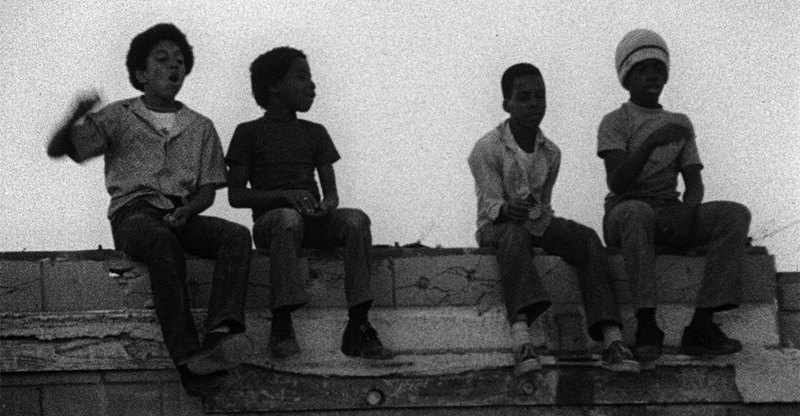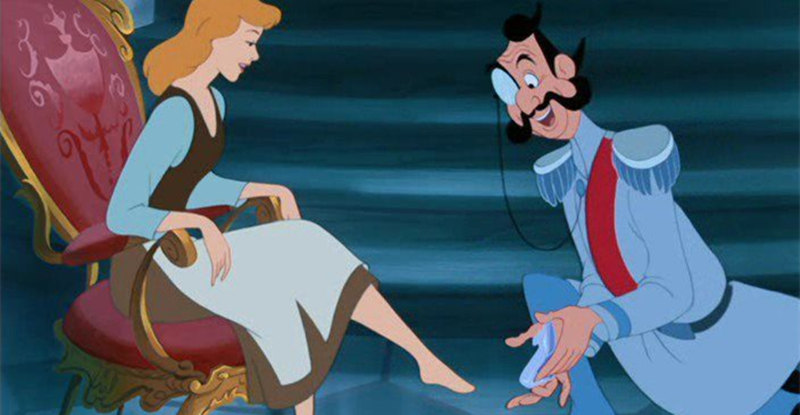“We all end up dead. It’s just a question of how and why.”
The first thing we see in “Braveheart” is the Scottish landscape, and along with the battle scenes it is probably what one remembers most about the film. Not that its star and director, Mel Gibson, doesn’t make an impression as Sir William Wallace, Scottish national hero in his country’s fight for independence from English rule in the thirteenth century. Indeed, Gibson’s enthusiasm in the role is commendable, but it’s hard to top the panoramic beauty of the highlands or the sight of thousands of charging soldiers on the field of battle. In fact, given the grandeur of the landscapes, it’s amazing that Gibson is able to infuse his character with enough spirit and nobility that anybody notices him at all. But he does, making Wallace both human and mythic at the same time. The film deserved its five Academy Awards for Best Picture, Director, Cinematography, Makeup, and Sound Effects Editing. It also deserved this gorgeous Blu-ray high-definition transfer, giving videophiles material worth showing off their home-theater equipment.
Screenwriter Randall Wallace based the story of his ancestor on some historical knowledge, some legend, and a lot of conjecture about his life and times. When we first meet William Wallace, he is a boy and the year is 1280 A.D. The story introduces us to the movie’s conflict immediately as young William witnesses the mass murder of a group of Scottish leaders invited to a peace summit by England’s Edward I, known as “Longshanks,” depicted in the film as a ruthless monarch bent on controlling all of Scotland at any cost. Scene-stealing Patrick McGoohan (“Secret Agent,” “The Prisoner”) plays Edward brilliantly, making Edward the perfect villain, a butcher willing to sacrifice any number of his own men to maintain his power. I have read that McGoohan’s performance also contributed to making Gibson something of a villain in the eyes of some of the British public, who feel that along with Gibson’s “The Patriot” the actor/director is holding a grudge against them, unfairly giving their country and its past a bad name. I would advise taking the film with a grain of salt and just enjoying the rousing adventure.
Anyway, back to the story: After the English have killed the Scots at an agreed-upon unarmed parley, young William’s father goes off and gets killed, too, which plants the seeds of revenge in the boy. But he is basically a peace-loving fellow and grows up a farmer who rejects the idea of rebellion against England. He secretly marries his beautiful childhood sweetheart, Murron (Catherine McCormack), secretly because her father thinks he’s a coward for not joining the rebel ranks. Meanwhile, two developments occur in England. First, King Edward arranges a marriage between his effete son, Prince Edward (Peter Hanly), and Princess Isabelle (Sophie Marceau), the daughter of his enemy, the King of France. Second, he invokes the law of Prima Nocte (“First Night”), giving English nobles first sexual rights on the night of a commoner’s wedding, another reason Wallace and Murron marry in secret.
However, when the English murder his new wife, Wallace finally moves to action, striking back with a vengeance. He joins the clans and eventually becomes their leader. Before long (at least in the film), he is in charge of a huge rebel army of peasants marching across Scotland and driving the English before them. The Scottish nobles, though, are reluctant to take sides. They enjoy the comforts of land and prestige largely because they appease the English. Chief among the nobles is Robert the Bruce (Angus McFadyen), who, along with his father, the film depicts as a political opportunist, a schemer, a waverer drawn to compromise, a man whom people can bribe with titles and money, unlike Wallace, whom the film portrays as selfless, incorruptible, and wanting nothing for himself, only freedom for his country.
As things go on, Wallace succeeds in driving out the English and then decides the only way to keep them out is for him and his army to invade England. And he almost accomplishes the feat. Unfortunately, he again finds himself betrayed, this time for good. The king brings him back to London, tortures and executes him. Before he dies, his captors ask Wallace to renounce the rebellion and acknowledge his allegiance to the King; Wallace’s last word in the film is “freedom.”
Who knows; it could have happened.
I should mention, too, that along the way Wallace becomes intimate with Princess Isabelle, who comes to admire a man of such high principle. Regardless, the film makes little of this matter, except that it affords a convenient reason for Isabelle to provide Wallace with private information concerning various upcoming battle plans.
No, it isn’t really for any personal relationships or for any serious character development that one admires “Braveheart.” It is mainly for Wallace’s unflinching honesty, the director’s well-paced storytelling, the gorgeous settings, and, of course, the scope of the movie’s battles. The scenes of mass carnage involving thousands of men are bloody and brutal, yet the filmmakers choreograph them with an almost balletic grace. They come off spectacularly (with the help of the Irish Reserve Army), and, besides, we get to learn why the Scots wore their kilts into combat–to flash the enemy!
Now, for those of you who need to know more about the real William Wallace, here are a few selected items from the “Encyclopedia Britannica” that the movie never mentions: “When King Edward returned from France in 1298, he invaded Scotland. On July 22 Wallace’s spearmen were defeated by Edward’s archers and cavalry in the Battle of Falkirk, Stirling. Although Edward failed to pacify Scotland before returning to England, Wallace’s military reputation was ruined. He resigned his guardianship in December and was succeeded by Robert de Bruce (later King Robert I) and Sir John Comyn “the Red.” There is some evidence that Wallace then went to France in 1299 and thereafter acted as a solitary guerrilla leader in Scotland; but from the autumn of 1299 we know nothing of his activities for more than four years. Although most of the Scottish nobles submitted to Edward in 1304, the English continued to pursue Wallace. On Aug. 5, 1305, Wallace was arrested near Glasgow and executed as a traitor. In 1306 Bruce raised the rebellion that eventually won independence for Scotland. Many of the stories surrounding Wallace have been traced to a late 15th-century romance ascribed to Henry the Minstrel. The most popular tales are not supported by documentary evidence, but they show Wallace’s firm hold on the imagination of his people.” Lastly, “Isabella was married to Prince Edward on Jan. 25, 1308,” some three years after Wallace’s death.
Don’t believe everything you see in the movies.
“Braveheart” is a big, epic movie on a vast, epic scale, not only brutally violent but brutally long. It’s worth it.
Video:
The movie’s visual qualities are real demo fare. If you’ve got a friend, a relative, a neighbor, or just a plain old passerby you want to wow with high-definition technology, this is the movie to do it. Pick almost any scene at random, and you’ve got an impressive spectacle to dazzle the uninitiated.
The 2.35:1 ratio, 1080p, MPEG-4, Blu-ray transfer is nothing short of terrific, with colors bright and rich, and deep black levels to set off the hues. These are not “movie” bright colors, though. They are lifelike bright, the natural kind of colors you see when you look outside at the hillsides and trees. There is some softness in the picture, to be sure, especially evident in a few longer shots, but close and medium shots display excellent detail. Moreover, there is just enough inherent print grain to give the image a realistic texture; and while there may be a trace of shimmering in things like chain mail, there are no hints of other digital artifacts, filtering, or edge enhancement to distract one from the beauty of the picture. The PQ allows one not only to enjoy every picture-postcard locale but every gash, slash, chop, and blood stain in every battle as well. Be sure to watch this one on as big a screen and in as dark a room as possible.
Audio:
The lossless Dolby TrueHD 5.1 audio is almost as spectacular as the video. It is not only robust enough to match the movie’s mayhem, but its surround dispersion conveys even little things like a bird flying overhead left to right in the rear speakers, the sound of horses’ hoofs as a rider approaches from the back, and the delights of James Horner’s Scottish-inflected musical score. With a wide dynamic range, a thunderous bass, a clear midrange, and a sweet high end, the audio sounds smooth and unforced between moments of dead quiet.
Extras:
Disc one of this two-disc “Sapphire Series” Blu-ray set contains the feature film; English, French, and Spanish spoken languages; English, French, and Spanish subtitles; English captions for the hearing impaired; twenty-two scene selections; a guide to elapsed time; and bookmarks. In addition, it contains an audio commentary by star and director Mel Gibson, plus three interactive timelines that offer a combination of video, text, and audio that one can access throughout the film or randomly. “Production” presents a history of the making of the film from a behind-the-scenes perspective; “Historical” presents an overview of Scotland’s greatest patriot; and “Fiction” identifies the events of the film.
Disc two includes several more-conventional bonus items. The first is “Battlefields of the Scottish Rebellion,” which provides details on four of Wallace’s major battles, with two of them, Falkirk and Bannockburn, presented in 3-D graphics. Next up is “Braveheart: A Look Back,” which contains three chapters: “A Company of Equals,” “The Sound of Laughter,” and “The Measure of a Film,” all in high definition and totaling a little over an hour. After that is “Smithfield: Medieval Killing Fields,” in high def, a twenty-five-minute history of the site of William Wallace’s execution (among many others). Then there are “Tales of William Wallace,” a thirty-minute featurette on the life of William Wallace, followed by “A Writer’s Journey,” a twenty-one featurette on the film’s writer, Randall Wallace, a present-day family relation. The extras conclude with two high-definition theatrical trailers and a handsomely embossed slipcover for the double Blu-ray case.
Parting Thoughts:
One of the drawbacks of “Braveheart,” like most epics, is its extreme length, nearly three hours. It goes by quickly, yet three hours is still quite a bit of one’s time. In a movie theater, as a captive audience, the time may fly by faster, but at home with inevitable interruptions it can easily take up a full afternoon or evening. You will want to plan your time accordingly.
It isn’t easy making epics. Often, the surrounding material can overwhelm the characters. Just ask Kevin Costner, whose “Waterworld” and “Postman” looked so bloated with peripheral matter we hardly noticed the main character. But Gibson manages to keep “Braveheart” afloat by solidly grounding Wallace in the viewer’s mind and heart. The actor’s general amiability makes Wallace a more personable and likable character than those in most in such epics. The battle scenes are probably what audiences will recollect most, yet Wallace himself comes over almost as strongly as any of the combat. The only substantial equivalent is Kirk Douglas in “Spartacus,” another epic where the main character remains firmly rooted in memory despite the spectacle. “Braveheart” is deserving of its popularity, praise, and awards. It’s a big, old-fashioned, grand-scale blockbuster adventure, made all the better in Blu-ray high definition.
“‘At’ll wake ye up en th’ mornin’, boy.”


